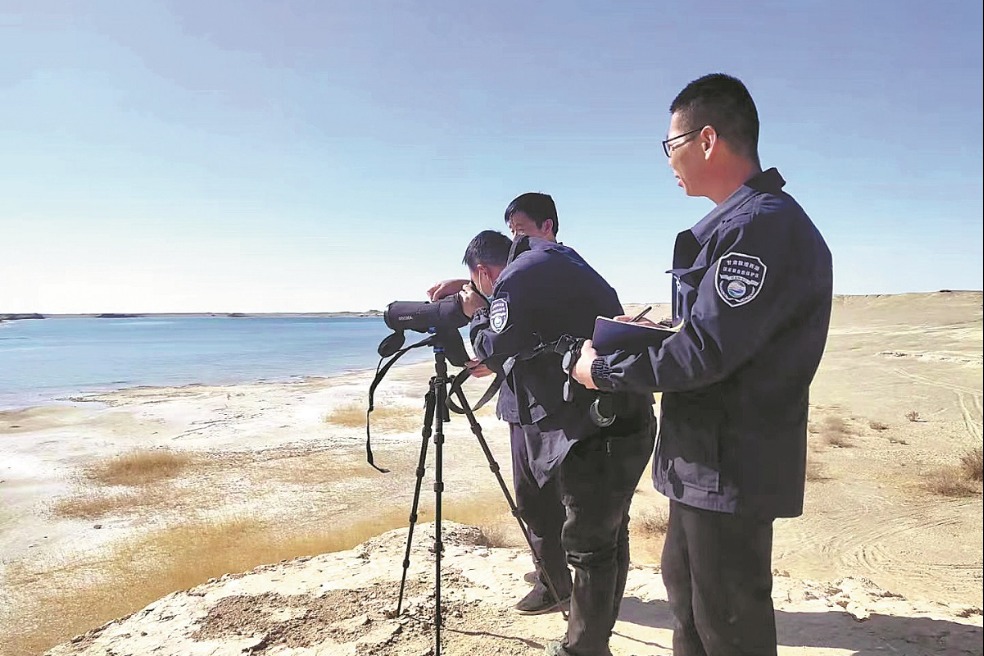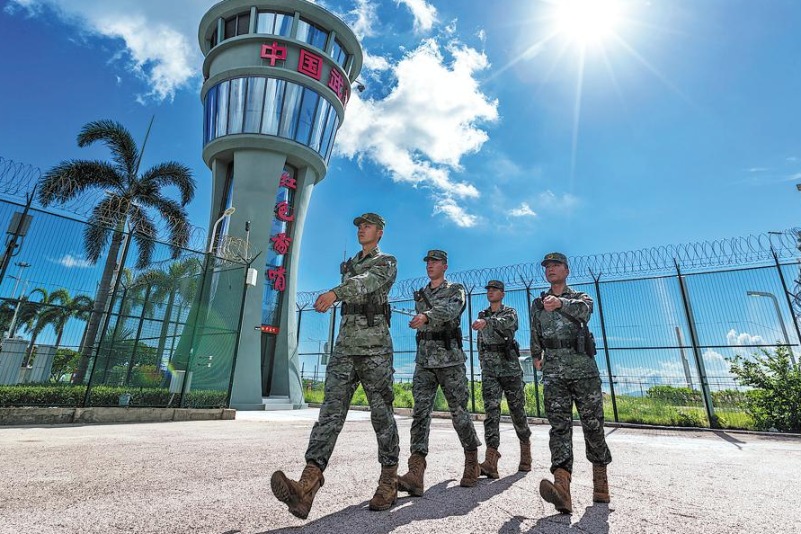Monitoring stations improve capability to study volcanic activity

CHANGCHUN — Ascending the Changbai Mountains in Northeast China, the fresh green of early spring slowly gives way to lingering snow. On a slope stands a three-story building — the largest volcanic monitoring station in the country.
Located in Jilin province, the Changbai Mountains are well-known for the mysterious Tianchi crater lake, yet few know that they were the site of one of the most powerful volcanic eruptions in recorded history. In 946, an eruption dispersed ash more than 10,000 kilometers away, reaching as far as Greenland.
To strengthen China's capacity to study and predict volcanic activity, the station was established in the mid-1990s by the China Earthquake Administration and the Jilin provincial government.
Over the past two decades, it has evolved into China's most comprehensively equipped volcanic monitoring facility. The station operates 15 monitoring points across the northern, western and southern slopes of the mountains, and its research team has expanded from three people to 10.
Kong Qingjun, head of the station, remembers the challenges in the early days, when there was no optical fiber communication.
"Most of the data had to be stored on hard disks and retrieved manually every 10 days," he said. "Once, my colleague and I got lost in heavy fog while trying to replace the hard disks."
Thanks to infrastructure improvements in recent years, many field stations now have optical fiber and Wi-Fi connections, which greatly enhance real-time data transmission, Kong said.
But challenges remain.
"Continuous data collection is crucial," he said. "Yet the harsh conditions — strong winds, heavy snow and lightning — demand constant vigilance from our technicians."
Globally, volcano research has a much longer history. The world's first observatory was founded in 1841 at Italy's Mount Vesuvius, followed by the first modern observatory at Hawaii's Kilauea Volcano in the United States around 70 years later.
By comparison, China lags behind some developed countries in volcanic monitoring, facing challenges such as limited historical data, a shortage of advanced equipment and insufficient monitoring technologies. "Volcanic eruptions are rare and occur over long cycles, so we place great importance on collaborating with scientific institutions both domestically and internationally," said Liu Guoming, the station's chief engineer, noting that researchers from the station have visited volcano observatories in countries such as Italy and the United States, sometimes even witnessing eruptions firsthand.
With its growing academic reputation, the station has built long-term partnerships with volcano experts and institutions in countries such as the United States, Japan, Italy and Russia. Moreover, China's continued investment in the field has brought in new technologies, such as satellite remote sensing and drone-mounted instruments.
According to Kong, the station is working with the Jilin Earthquake Agency to upgrade its early warning system. "We're building an artificial intelligence-powered platform to improve our ability to detect and issue warnings for potential volcanic activity," he said.
"After over 20 years of continuous monitoring, we are gradually uncovering the secrets of the Changbai Mountains," he said. "Our goal is to grow into a world-class volcanic monitoring station."
- Monitoring stations improve capability to study volcanic activity
- Cultural fair highlights link to tech innovations
- Innovative planter provides smart solution to indoor gardening
- Lace hub's global dominance unthreads tangled US tariff policy
- Exotic pet vet relishes talk with animals
- Nation's progress in biodiversity conservation unveiled




































